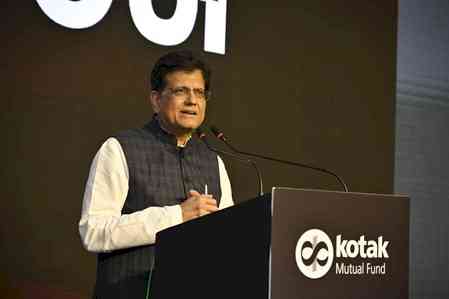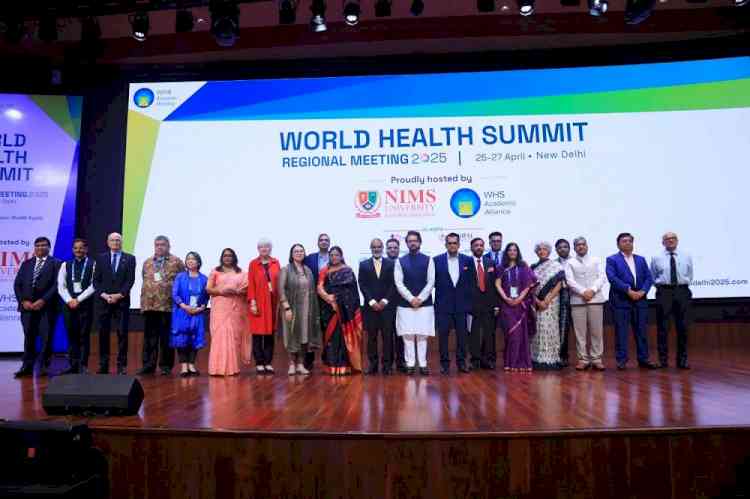SIAM organizes 7th edition of automotive logistics conclave encouraging participants to collaborate
The conclave witnessed participation of Automobile OEMs, Logistics Players, Technology Providers, Consultants and esteemed Government delegates

New Delhi: Focused on the underlining scope for domestic transportation of finished vehicles, the Society of Indian Automobile Manufacturers (SIAM), virtually organized the 7th SIAM Automotive Logistics Conclave, yesterday.
The conclave witnessed participation of Automobile OEMs, Logistics Players, Technology Providers, Consultants and esteemed Government delegates who came together to jointly discuss the challenges, solutions and way-forward for the Automotive Logistics industry in the country.
The conclave witnessed a series of panel discussions on optimization of logistics related activities and mitigating problem that can pave the way for faster growth in the automotive industry.
On the occasion of the 7th Automotive Logistics Conclave, Mr P K Agarwal, Special Secretary (Logistics), Ministry of Commerce & Industry, said “SIAM has been conducting an exclusive conclave on automobile logistics for 7 years now, thereby providing SIAM’s commitment to big improvement to automobile logistics. Automobile Logistics is an important area and we would work with SIAM to ensure issues are addressed wherever Government is involved. The idea of moving as much logistics on rail mode is a very good idea. 30 percent is an achievable target and we all are working towards it.”
Setting the context with his opening remark, Mr Vikas Jain, Chairman – SIAM Logistics Group & Vice President, Hyundai Motor India, said “Indian automotive logistics scenario, approximately 90% of transportation is done by Road. It is heartening to note that the Government is improving the road infrastructure and supporting the vibrant trucking industry. While the automobile industry is looking at a good recovery, the future also seems to be promising, with India’s economy poised for fairly good growth. Therefore, capacities have to be created looking at overall demand.
Discussing on the various aspects of road transportation logistics, Mr Jasjit Sethi, President & CEO, TCI SCS, “From Euro 1 to Euro 6, in 20 years, the cost of truck has gone up 3 times. The distance which was covered then was around 6,000 kms and we record less than that now. Despite better roads, technology and infrastructure, we are still a bit behind.”
Mr Achal Paliwal, CEO, TML Distribution, added to the discussion, “Transporters and Contractors need to recognize drivers as employees. Machine utilisation can happen with proper networking. Driver and Machines are key resources for transporters and in their best utilisation lies the business viability.”
Mr Sumit Lahiri, Head – Logistics & Distribution, Bajaj Auto, said “The pandemic has taught a lot on how to deal with problems. During the initial days of the pandemic, relay driver model is how we could run the show. It reduced fatigue and increase efficiency of drivers.”
While discussing how various digital initiatives was influencing the automotive logistics space, Mr Arjun Nagarajan, Co-Founder and CEO, Syook, “The pandemic forced us to innovate. Digital technologies acted as a force multiplier. With scare investments, return on investments is very important. Digital technologies is transforming the sector from being reactive to being proactive with focus on RoI from the day one.”
Mr Jagmeet Singh, CEO, Axestrack, added “The pandemic gave motivation to enter into space, which was never thought off. Digital Technologies are supposed to connect man, machine and material. When drivers got stranded during lockdown, it was data analytics and digital technologies, which came into play.”
Focusing on what needs to be done, Ms Sapna Ahuja, COO, MapmyIndia, said, “There are many digital initiatives taken by the Government. What needs to be done is to integrate various systems. Transporters have to calculate the cheapest, fastest, and safest route. This can be achieved once these systems are integrated.”
Moderating the session, Mr Pratik Shah, Director, EY, had remarked, “The logistics industry constitutes about 12-13% of India’s GDP, which is quiet high comparing to some of the developed countries. Around 3 to 4% is attributed to the inefficiencies there in the system”.
Introducing the session on the role of Railways in Automotive Logistics, Mr R S Kapoor, Senior Advisor, Maruti Suzuki, said, “The railways is the backbone of country’s logistics sector, carrying 1.2 billion freight traffic every year over a network of 68,000 kms. Across sectors it is considered a safe, green and energy efficient mode of transportation.”
Ms Suhani Mishra, Director (Freight Marketing), Railway Board, Ministry of Railways, said on various future plans of Railways, “From around 16 NMG rakes in 2017, we have increased the number to 82 by 2021. We have taken up the case of modification of designs and for two-wheelers and we are taking suggestions to include new kind of NMG rakes in the system. Also, recently Railways have opened a few auto-hubs and new stations.”
Mr Umesh Bhanot, Regional Head – South Asia, APL Logistics, said “Currently, the market share of Railways in vehicle transportation of auto share is 14.5% as of December 2020. It increased from 1% in 2013-2014 to 14% in 2020, which is significant increase. However, there’s still a lot of unmet potential.”
Talking about the role of freight corridor, Mr Ved Prakash, General Manager, Dedicated Freight Corridor Corporation of India, said “Dedicated Freight Corridor is a Railway line along the Golden Quadrilateral of India, which carries 60% of total rail network, but carrying 58% of passenger and 57% of freight traffic.”
Talking about low transportation of two-wheelers by railways, Mr M C Shekhar, Divisional Head - Logistics, HMSI, said “. Two wheelers should be categorised as a different commodity, as it has to be manually driven. Also, the window time of 7 to 8 hours to be given to load over 11,000 two-wheelers is highly inadequate.”
Concluding the conclave, Mr Rakesh Sen, Co-Chairman, SIAM Logistics Group & Senior General Manager, Mahindra & Mahindra, said, “The sessions were really enlightening. One of the challenges we are facing for health and safety of drivers community, which has come to fore. Also, the discussions have directed us to integration of man, material, and machine.”


 cityairnews
cityairnews 









